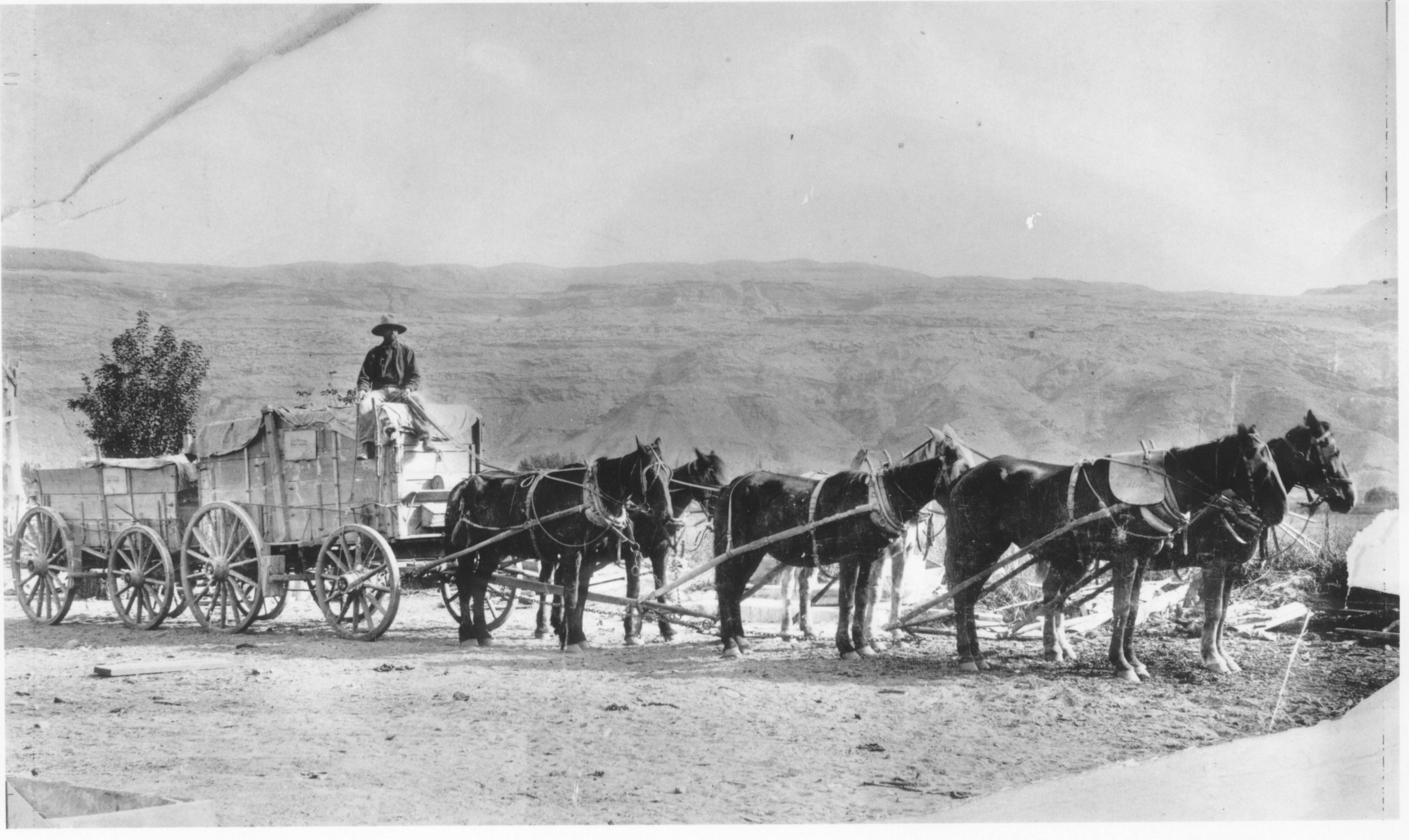Some information may be outdated.
Moabites today may love or bemoan the town’s remote location, lying far from major highways, rail routes, and flight paths. How did people get to this place and travel across the landscape before modern modes of transportation? Oral histories and first-person accounts in the Moab Museum’s collection—and on exhibit through the month of April—offer insights.
The Native people of the Moab region have lived in and traveled across the landscape for millennia. Regina Lopez Whiteskunk, an enrolled member of the Weminuche band of the Ute Mountain Ute tribe and former co-chair of the Inter-Tribal Coalition on Bears Ears, explained in a 2019 interview that “to be Ute is to be in constant migration.” Prior to forced relocation by the U.S. government, Ute people in the Moab area lived seasonally in the valley and in the La Sal Mountains, traveling in accordance with the seasons.
Other groups also moved across the landscape in accordance with the geography. Early traders and travelers made their way between New Mexico and California via the Old Spanish Trail, a section of which passes through the Moab Valley crossing the Colorado River near today’s Route 191 bridge. Oral histories in the museum’s collection show that early Moab settlers made their way to the valley with families, belongings, and livestock via a variety of routes.
“My grandfather, Orlando W. Warner, with his family came to Moab from Deseret in the summer of 1880,” said Emma Peterson Walker in a 1974 Western Studies Oral History Project interview. “In the canyon just beyond the entrance to Arches, in order to get into the valley, they took their wagons apart and let them down over the cliff along with their other belongings, drove their animals over the rocky rim, assembled their wagons and came into the river which they had to ford. He settled on the land between Mill Creek and Pack Creek.”
Warner became a prominent figure in the community: he is credited with damming Mill Creek to irrigate crops and later generate electricity, and he was also instrumental in establishing some of the Moab Valley’s orchards.
Other settlers utilized the Colorado River itself as a mode of transit.
“We came to Cisco in a wagon and then we went down to the river at Cisco and built a raft and floated down the river to Castle Valley,” explained Mart Fish in a 1953 oral history interview by Austin and Alta Fife. “I ran several rafts down the river after that, taking contracts for bringing provisions in for people.” Fish arrived from Indiana by way of Kansas in 1888.
Much has changed since Warner, Fish, and other settlers first made their way to the Moab area, and transportation across the region today is significantly less arduous. During all chapters of human history, however, the geography of the land has informed how people have traveled across it.
“A Grand Heritage: Stories from the Oral History Archive,” on display through the end of April, offers these firsthand accounts and many more stories from Moab’s multifaceted past.
The Moab Museum is dedicated to sharing stories of the natural and human history of the Moab area. To explore more of Moab’s stories and artifacts, find out about upcoming programs, and become a Member, visit www.moabmuseum.org.
Appreciate the coverage? Help keep local news alive.
Chip in to support the Moab Sun News.





